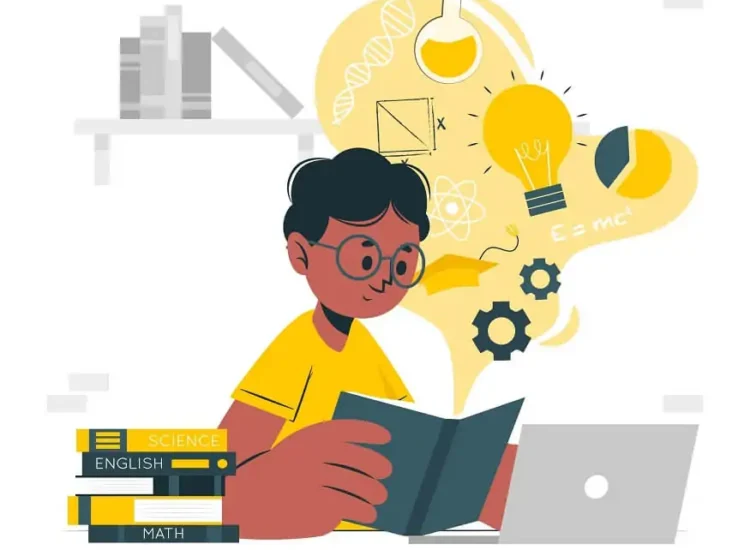The Growing Power of Artificial Intelligence Voice: Transforming How We Interact
The human voice is a fundamental aspect of communication and identity. For centuries, our interaction with technology has primarily relied on visual input and physical interfaces – screens, keyboards, mice, buttons. However, the landscape of human-computer interaction is undergoing a dramatic transformation, largely driven by the rapid advancements in artificial intelligence voice technology.
Toc
Artificial intelligence voice refers to the application of AI and machine learning to process, understand, and generate human speech. It’s the engine behind technologies that allow computers to speak to us in natural-sounding voices (voice synthesis or text-to-speech) and to understand our spoken commands and language (voice recognition or speech-to-text). This dual capability is paving the way for more intuitive, accessible, and powerful interactions with the digital world.
From virtual assistants residing in our smartphones and homes to sophisticated narration tools and real-time transcription services, artificial intelligence voice is moving beyond novelty to become an indispensable part of our daily lives and numerous industries. It’s not just about convenience; it’s about creating new possibilities for content creation, enhancing accessibility, streamlining business operations, and enabling entirely new forms of interaction that were once confined to science fiction.
Understanding the scope and potential of artificial intelligence voice technology is crucial in today’s rapidly evolving digital environment. This article will explore the core components of AI voice, delve into its diverse applications across various sectors, and discuss the significant impact it is having, as well as the challenges and exciting future that lie ahead for this transformative field.
What is Artificial Intelligence Voice Technology? The Foundations
At its core, artificial intelligence voice technology is the bridge between human language spoken aloud and the digital realm of computers and data. It’s powered by complex algorithms that enable machines to perceive, interpret, and generate the nuances of human speech.

Understanding the Two Sides: Voice Synthesis (Text-to-Speech) and Voice Recognition (Speech-to-Text)
Artificial intelligence voice technology can generally be broken down into two primary, yet interconnected, areas:
-
Voice Synthesis (Text-to-Speech – TTS): This is the process of converting written text into spoken language. Early TTS systems, as we touched upon previously with voice generators, were often based on concatenating pre-recorded speech segments or using simple rule-based models, resulting in robotic and unnatural-sounding output. The application of AI, particularly deep learning models, has revolutionized this field. Modern AI-powered TTS can generate highly natural, fluid, and even expressive speech, often indistinguishable from a human voice. An artificial intelligence voice generator falls squarely into this category, using AI to create synthetic speech from text input. This side of AI voice technology is focused on the machine speaking to the human.
-
Voice Recognition (Speech-to-Text – STT): This is the reverse process – converting spoken language into written text. This involves complex steps where the AI analyzes audio waveforms, breaks down the sounds into phonemes, identifies words and sentences, and then applies linguistic and contextual understanding to transcribe the speech accurately. Early speech recognition systems were often cumbersome, requiring extensive training for a single speaker and struggling with accents, background noise, and variations in speaking style. AI, through sophisticated acoustic and language models, has dramatically improved the accuracy, speed, and robustness of STT systems, making them practical for a wide range of applications. This side of artificial intelligence voice technology is focused on the machine understanding the human.
While these two areas are distinct in their function (outputting audio vs. inputting audio), they often rely on similar underlying AI principles and algorithms trained on vast datasets of human speech. Progress in one area often informs advancements in the other, driving the overall capability of artificial intelligence voice technology forward.
The Role of AI and Machine Learning in Modern Voice Technology
The transformation from basic speech technology to sophisticated artificial intelligence voice was made possible by the advent and rapid development of AI and machine learning, particularly deep learning.
Traditional methods for TTS and STT relied more on hand-crafted rules, statistical models, and simpler algorithms. While these worked to some extent, they struggled to capture the immense variability and complexity of human speech. Speech is not just a sequence of sounds; it involves pitch changes, rhythm, emphasis, dialect, emotion, and is heavily influenced by context.
Machine learning allows computers to learn these complex patterns directly from data, rather than being explicitly programmed with rules for every possible scenario.
1. https://lifeify.net/mmoga-the-best-cloud-storage-hosting-for-small-businesses/
4. https://lifeify.net/mmoga-find-the-best-personal-web-hosting-for-your-small-business/
5. https://lifeify.net/mmoga-high-performance-vps-hosting-for-e-commerce-success/
- For Voice Synthesis, deep learning models (like Generative Adversarial Networks or Transformer networks combined with neural vocoders) are trained on massive datasets of human speech recordings and their corresponding transcripts. They learn the intricate relationship between written text and the acoustic features of natural speech, enabling them to generate highly realistic waveforms.
- For Voice Recognition, AI models (like deep neural networks) are trained on vast amounts of spoken audio covering diverse speakers, accents, and environments. They learn to map acoustic signals to phonetic units, then to words, and finally to contextually relevant text, even when faced with variations and noise.
Furthermore, AI enables natural language processing (NLP) capabilities that are crucial for both sides of artificial intelligence voice. For STT, NLP helps the AI understand the meaning and structure of the transcribed text to improve accuracy. For TTS, NLP helps the AI determine the appropriate intonation, stress, and pauses based on the sentence’s semantic and syntactic structure.
The ability of AI and machine learning to process vast amounts of data and learn complex, non-linear patterns is the fundamental reason why modern artificial intelligence voice systems are so dramatically better than their predecessors in terms of naturalness, accuracy, and versatility. This continuous learning from data is what drives the ongoing improvement in AI voice technology.
Capabilities and Applications: Where AI Voice is Making Noise
The advancements powered by AI have propelled artificial intelligence voice technology into a wide array of applications, impacting numerous aspects of our lives and businesses. Its capabilities extend beyond simple conversion, enabling more complex and interactive uses of speech.
Generating Natural-Sounding AI Voices (Synthetic Speech)
As discussed in the previous section, one of the most prominent capabilities of artificial intelligence voice is the generation of synthetic speech that sounds remarkably natural. This is where the artificial intelligence voice generator comes into play, creating audio from text.
Modern AI voice generators can produce speech with:
- High Fidelity: The audio quality is clear and crisp, free from the artifacts and robotic sounds of older systems.
- Natural Prosody: This refers to the rhythm, stress, and intonation that make speech sound human. AI models are now very good at predicting and implementing natural prosodic features based on the input text and desired style.
- Emotional Range: While still an area of active research, some advanced AI voices can generate speech that conveys basic emotions like happiness, sadness, or anger, adding another layer of realism and usefulness for applications requiring expressive narration.
- Multilingual Support: Leading AI voice platforms offer a wide selection of languages and regional accents, enabling creators and businesses to reach a global audience with localized audio content.
The applications for generating artificial intelligence voice are diverse, including:
- Content Creation: Voiceovers for videos, podcasts, documentaries, and social media.
- Audiobooks: Narrating books quickly and cost-effectively.
- Marketing and Advertising: Creating voice tracks for commercials, product demos, and promotional materials.
- Accessibility: Converting digital text (websites, documents, e-books) into spoken audio for individuals with reading difficulties or visual impairments.
- IVR Systems and Customer Service: Providing natural-sounding voices for automated phone systems.
- Education and Training: Narrating e-learning modules and training materials.
The ease, speed, and scalability with which natural-sounding audio can be generated using an artificial intelligence voice generator are fundamentally changing content production workflows.
Enabling Seamless Human-Computer Interaction (Voice Assistants, Transcription)
The other side of the artificial intelligence voice coin is its ability to understand human speech, enabling seamless interaction with technology using only our voice. This is powered by sophisticated Speech-to-Text (STT) technology enhanced by AI and Natural Language Understanding (NLU).
The most familiar application is voice assistants like Siri, Google Assistant, and Amazon Alexa. These systems use AI voice recognition to listen for commands, process natural language to understand the user’s intent, and then use AI voice synthesis to respond verbally. They allow users to perform tasks, get information, control smart devices, and interact with applications hands-free.
Transcription services are another major area where AI voice recognition is making a huge impact. AI-powered transcription services can convert spoken audio from meetings, interviews, lectures, or recordings into text quickly and with high accuracy. This saves countless hours of manual transcription effort. Real-time transcription is also becoming common in communication platforms, providing captions for live conversations or video calls, enhancing accessibility for deaf and hard-of-hearing individuals.
Other applications include:
- Voice Commands: Controlling devices, software, or vehicles using spoken instructions.
- Dictation and Voice Typing: Converting spoken words into written text in documents or emails.
- Call Centers: Analyzing customer calls for sentiment analysis, keyword spotting, and automating responses or routing.
- Medical Documentation: Allowing doctors to dictate notes directly into electronic health records.
The ability of AI to accurately understand varied speech, accents, and background noise has made voice recognition reliable enough for mainstream use, transforming how we interact with technology and access information. This capability is a cornerstone of modern artificial intelligence voice applications.
The Emerging World of AI Voice Cloning and Customization
A more advanced and rapidly developing capability within artificial intelligence voice is the ability to clone or replicate specific human voices. This involves training an AI model on a sample of a person’s voice to generate new speech that sounds exactly like them, with their unique timbre, accent, and speaking style.
AI voice cloning technology requires sophisticated deep learning models capable of capturing the intricate acoustic fingerprint of an individual’s voice. With relatively short audio samples (sometimes just a few minutes), advanced artificial intelligence voice generator systems equipped with cloning features can create a synthetic voice that is remarkably similar to the original.
The potential applications of AI voice cloning are vast:
1. https://lifeify.net/mmoga-the-sound-of-tomorrow-exploring-voice-artificial-intelligence/
4. https://lifeify.net/mmoga-find-the-best-personal-web-hosting-for-your-small-business/
- Personalized Assistants: Creating voice assistants that sound like a familiar person.
- Content Creation: Allowing creators to narrate content in their own voice without needing to record every word, or reviving the voices of historical figures for documentaries or educational content (with appropriate permissions and disclosure).
- Entertainment: Voicing characters in games, animation, or films, potentially allowing actors to “perform” without being physically present for every line.
- Accessibility: Creating a synthetic voice for individuals who are losing their ability to speak, allowing them to communicate using a voice that is similar to their own pre-condition voice.
Beyond full cloning, artificial intelligence voice technology also allows for voice customization. This involves creating unique synthetic voices by blending characteristics from different voice profiles or adjusting parameters beyond standard pitch and speed to create a distinct brand voice for a company or product.
While incredibly powerful, AI voice cloning and customization capabilities also bring significant ethical considerations regarding consent, deepfakes, and potential misuse, which we will discuss further. However, the underlying technology represents a significant leap in the realism and personalization possible with artificial intelligence voice.
The Impact and Future of Artificial Intelligence Voice
The integration of artificial intelligence voice into technology is not merely a technical upgrade; it’s having a profound impact on various aspects of society, from how businesses operate to how individuals access information and interact with the world around them. Understanding this impact and looking ahead to future developments is key to appreciating the full scope of AI voice technology.

Benefits Across Industries: Efficiency, Accessibility, and Personalization
The widespread adoption of artificial intelligence voice is driven by clear and compelling benefits across a multitude of industries:
- Efficiency and Cost Reduction: Automating tasks that previously required human effort, such as transcription, voiceovers, and handling routine customer inquiries via IVR, significantly reduces operational costs and saves valuable time. Content creators can produce audio much faster, and businesses can process voice data more efficiently.
- Enhanced Accessibility: Artificial intelligence voice is a game-changer for accessibility. Text-to-speech opens up written content to individuals with visual impairments or reading disabilities, while speech-to-text enables hands-free interaction and provides transcription for the deaf and hard of hearing. This makes technology and information more inclusive.
- Improved User Experience: Interacting with technology using natural language is often more intuitive and convenient than navigating complex menus or typing. Voice assistants provide quick access to information, and hands-free control is invaluable in many situations (e.g., driving, cooking). Natural-sounding AI voices make automated interactions more pleasant.
- Scalability and Speed: Unlike human voice actors or transcriptionists, AI voice systems can scale almost infinitely to handle massive volumes of text or audio data simultaneously. They operate 24/7 and can deliver results in near real-time, meeting the demands of modern, fast-paced applications.
- Personalization and Localization: AI voice cloning allows for personalized interactions, and the ability to generate speech in numerous languages and accents enables businesses and content creators to localize their audio content effectively, reaching diverse global audiences with tailored messaging.
From healthcare and finance to entertainment and education, the benefits derived from leveraging artificial intelligence voice technology are driving innovation and improving user experiences.
Despite its immense potential, the widespread adoption of artificial intelligence voice also brings significant challenges that need careful consideration and proactive solutions.
- Ethical Concerns: The most pressing ethical issues relate to the potential for misuse, particularly with AI voice cloning. Creating “deepfake” audio can facilitate misinformation, fraud, impersonation, and manipulation. Ensuring consent for voice cloning, establishing clear usage policies, and developing robust detection methods for synthetic audio are critical steps.
- Privacy and Security: Voice data is biometric information. Using voice recognition requires processing sensitive audio recordings, raising privacy concerns about how this data is collected, stored, and protected. Secure handling of voice data and transparent privacy policies are essential to build user trust. There are also security risks associated with voice authentication systems if AI could potentially mimic a voice convincingly enough to bypass security measures.
- Quality and Naturalness Limitations: While significantly improved, AI voices can still sometimes sound unnatural, especially with highly emotional or nuanced speech, complex terminology, or when switching contexts rapidly. Background noise and variations in speaking style can still challenge even advanced voice recognition systems, leading to transcription errors. The “uncanny valley,” where AI voices sound almost human but subtly off, can still be a barrier in some applications.
- Bias: AI models are trained on data, and if that data reflects societal biases (e.g., accents, gender representation), the AI voice technology might perpetuate those biases in its performance or accuracy.
Addressing these challenges requires ongoing research, development of safeguards, clear regulatory frameworks, and promoting responsible use among developers and users of artificial intelligence voice technology.
The Road Ahead: Innovations in Artificial Intelligence Voice
The field of artificial intelligence voice is one of the most dynamic areas in AI research and development. The future promises even more sophisticated and integrated applications.
We can anticipate:
- Hyper-realistic and Emotionally Intelligent Voices: Future AI voices will likely become even more indistinguishable from humans, capable of expressing a wider and more subtle range of emotions, adapting their tone based on context, and even performing complex vocal nuances like singing or storytelling more convincingly.
- Real-time, Low-Latency Processing: Improvements in algorithms and computing power will enable near-instantaneous voice synthesis and recognition, crucial for seamless real-time conversations with AI or real-time voice transformation.
- Enhanced Multilingual and Cross-Lingual Capabilities: AI will likely become even better at understanding and generating speech in diverse languages and accents, potentially enabling real-time voice-to-voice translation that preserves the original speaker’s voice characteristics.
- More Robustness to Noise and Variability: Future STT systems will be even more adept at accurately transcribing speech in challenging environments with significant background noise, multiple speakers, or unusual speaking patterns.
- Deeper Integration and Contextual Awareness: Artificial intelligence voice will be more deeply integrated into other AI systems (like natural language understanding, sentiment analysis, and predictive AI) to create highly intelligent conversational agents that understand context, remember past interactions, and provide truly personalized responses.
- Standardization and Accessibility: As the technology matures, we may see greater standardization in AI voice formats and APIs, making it easier for developers to integrate these capabilities and ensuring that high-quality AI voice is accessible to more people.
The continuous innovation in artificial intelligence voice technology holds the promise of creating more natural, intuitive, and powerful ways for humans to interact with technology and with each other across linguistic barriers.
In conclusion, artificial intelligence voice is a transformative technology that encompasses the ability of machines to understand and generate human speech. From generating realistic narration using an artificial intelligence voice generator to enabling hands-free control through voice recognition, AI voice is reshaping industries and improving lives. While ethical considerations and technical challenges remain, the ongoing advancements promise a future where voice interaction with technology is seamless, intuitive, and deeply integrated into the fabric of our digital and physical world. As this field continues to evolve, the power and potential of artificial intelligence voice will only continue to grow, unlocking new possibilities for communication, accessibility, and innovation.










